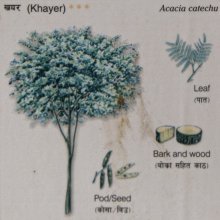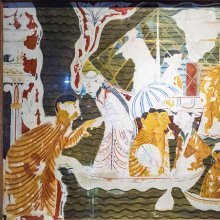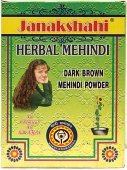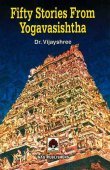Katha, Kathā, Kaṭha: 25 definitions
Introduction:
Katha means something in Buddhism, Pali, Hinduism, Sanskrit, Jainism, Prakrit, the history of ancient India, Marathi, Hindi, biology. If you want to know the exact meaning, history, etymology or English translation of this term then check out the descriptions on this page. Add your comment or reference to a book if you want to contribute to this summary article.
Images (photo gallery)
In Hinduism
Purana and Itihasa (epic history)
Source: Cologne Digital Sanskrit Dictionaries: The Purana Index1) Kaṭha (कठ).—Ekārṣeyas.*
- * Matsya-purāṇa 200. 3.
2) Kathā (कथा).—Of Kāma and Keśava to be narrated in madanadvādaśīvrata.*
- * Matsya-purāṇa 7. 14.

The Purana (पुराण, purāṇas) refers to Sanskrit literature preserving ancient India’s vast cultural history, including historical legends, religious ceremonies, various arts and sciences. The eighteen mahapuranas total over 400,000 shlokas (metrical couplets) and date to at least several centuries BCE.
Jyotisha (astronomy and astrology)
Source: Wisdom Library: Brihat Samhita by VarahamihiraKathā (कथा) refers to “historical narrations”, according to the Bṛhatsaṃhitā (chapter 1), an encyclopedic Sanskrit work written by Varāhamihira mainly focusing on the science of ancient Indian astronomy astronomy (Jyotiṣa).—Accordingly, “[...] In my work on Astronomy, I have treated of the rising and setting of the planets as well as their retrograde and reretrograde motions and the like. In my work on Horoscopy, I have fully treated of nativity, of yātrā and of marriage. In the present treatise, I have rejected questions and re-questions, historical narrations [i.e., kathā], unimportant planetary phenomena and all that is useless; and my purpose is to speak clearly only of the vital truths of the several subjects treated of”.

Jyotisha (ज्योतिष, jyotiṣa or jyotish) refers to ‘astronomy’ or “Vedic astrology” and represents the fifth of the six Vedangas (additional sciences to be studied along with the Vedas). Jyotisha concerns itself with the study and prediction of the movements of celestial bodies, in order to calculate the auspicious time for rituals and ceremonies.
Shaivism (Shaiva philosophy)
Source: Brill: Śaivism and the Tantric Traditions (philosophy)Kathā (कथा) refers to a “discourse”, according to Svacchandatantroddyota, vol. VI, 98 (alluding to Nyāyasūtra 1.2.1).—Accordingly, “Debate (vāda), which comprehends both the thesis and the antithesis, [and] which is a discourse of [people] (kathā-rūpa) who are free of bias [...]”

Shaiva (शैव, śaiva) or Shaivism (śaivism) represents a tradition of Hinduism worshiping Shiva as the supreme being. Closely related to Shaktism, Shaiva literature includes a range of scriptures, including Tantras, while the root of this tradition may be traced back to the ancient Vedas.
In Buddhism
Mahayana (major branch of Buddhism)
Source: academia.edu: A Study and Translation of the GaganagañjaparipṛcchāKathā (कथा) refers to “advice”, according to the Gaganagañjaparipṛcchā: the eighth chapter of the Mahāsaṃnipāta (a collection of Mahāyāna Buddhist Sūtras).—Accordingly, “Then the Bodhisattva Gaganagañja, having praised the Lord with these verses, addressed himself to the Lord: ‘[...] If, Lord, the Tathāgata gives some advice (kathā) about the entrance into the analysis of the dharma (dharmaviniścaya) to me, I would ask a question. Why is that? The Lord, having obtained the knowledge of non-attachment (asaṅga), is skilled in knowing the excellent and not so excellent abilities in all living beings. The Lord, having obtained the light, is free from the all darkness (andhakāra). [...]’”.

Mahayana (महायान, mahāyāna) is a major branch of Buddhism focusing on the path of a Bodhisattva (spiritual aspirants/ enlightened beings). Extant literature is vast and primarely composed in the Sanskrit language. There are many sūtras of which some of the earliest are the various Prajñāpāramitā sūtras.
In Jainism
General definition (in Jainism)
Source: archive.org: The Jaina Iconography1) Kaṭha (कठ) or Meghamālin is the name of a [false] ascetic who Dharaṇendra and Pārśvanātha, the Yakṣa accompanying Pārśvanātha: the twenty-third of twenty-four Tīrthaṃkaras or Jinas, commonly depicted in Jaina iconography.—[...] There exists in Jaina literature a mythological story as to Dharaṇendra [also, Pārśva-yakṣa] was saved by Jina Pārśvanātha from being burned in the sacred fire of a false ascetic Kaṭha (afterwards, Meghamālin) and how when attacked by Meghamālin, in his Kāyotsarga Āsana, Pārśvanātha was gratefully waited upon by the same serpent, born next as Dharaṇendra, or Nāgendra Yakṣa of Pātāla.
2) Kaṭha (कठ) is also mentioned as Jaratkāru in Jaina legend.—Certain vernecular manuscripts called Padma-purāṇa, Behulā-carita (Vipulā-carita also), give the stories of Behulā, Chand Merchant and Padmāvatī. It is most likely that the connection between the Jaina Padmāvatī and the Brahmanic Manasā originates from the Jaina legends. Jaratkāru, an ascetic, stands for Kaṭha in the Jaina legend and it is he who latterly became one with Śeṣa, the King of Pātāla.

Jainism is an Indian religion of Dharma whose doctrine revolves around harmlessness (ahimsa) towards every living being. The two major branches (Digambara and Svetambara) of Jainism stimulate self-control (or, shramana, ‘self-reliance’) and spiritual development through a path of peace for the soul to progess to the ultimate goal.
India history and geography
Source: archive.org: Nilamata Purana: a cultural and literary study (history)Kathā (कथा) is the name of a river mentioned in the Nīlamatapurāṇa. Stein has rightly changed Kathā of the Nīlamata into Abhayā, on the basis of Gaṅgodbheda Māhātmya. Identifying Gaṅgodbheda, he says, “In the ancient tank filled by the spring of Buḍabrār, we recognise, thus clearly the sacred basin of the Gaṅgodbheda and in the little spring which drains it on the east, the sin-removing stream of Abhayā”.
Source: Cologne Digital Sanskrit Dictionaries: Indian Epigraphical GlossaryKaṭha.—(LP), cf. Gujarātī kāṭmāl. Note: kaṭha is defined in the “Indian epigraphical glossary” as it can be found on ancient inscriptions commonly written in Sanskrit, Prakrit or Dravidian languages.
Source: Singhi Jain Series: Ratnaprabha-suri’s Kuvalayamala-katha (history)Kathā (कथा) (or Kahā) refers to a particular category of literature (of five kinds), as mentioned by Uddyotanasūri in his 8th-century Kuvalayamālā (a Prakrit Campū, similar to Kāvya poetry) narrating the love-story between Prince Candrāpīḍa and the Apsaras Kādambarī.—The Kuvalayamala (779 A.D.) is full of cultural material which gains in value because of the firm date of its composition. [...] The poet mentions five kinds of Kathās (4.5): sayala-kahā, khaṃḍa-kahā, ullāva-kahā, parihāsa-kahā etc. His disquisition on the nature of the different Kathās according to the metres, topics, serious or humourous, and style of writing is very enlightening and shows the richness of Kathā literature during his time. It is noteworthy that the topics of these were cast into the mould of the Rāsa literature that carried forward the kathā-sāhitya in Apabhraṃśa, Avahaṭṭā, Old-Gujarātī, Old-Rājasthānī, etc. and later in Avadhī, Bṛja-bhāṣā and Rājasthānī languages.

The history of India traces the identification of countries, villages, towns and other regions of India, as well as mythology, zoology, royal dynasties, rulers, tribes, local festivities and traditions and regional languages. Ancient India enjoyed religious freedom and encourages the path of Dharma, a concept common to Buddhism, Hinduism, and Jainism.
Biology (plants and animals)
Source: Google Books: CRC World Dictionary (Regional names)1) Katha in India is the name of a plant defined with Acacia catechu in various botanical sources. This page contains potential references in Ayurveda, modern medicine, and other folk traditions or local practices It has the synonym Acacia polyacantha Willd. (among others).
2) Katha is also identified with Areca catechu It has the synonym Areca catechu Willdenow (etc.).
3) Katha is also identified with Chukrasia tabularis It has the synonym Chikrassia velutina M. Roemer (etc.).
Example references for further research on medicinal uses or toxicity (see latin names for full list):
· Fam. Natur. Monogr. (1846)
· Species Plantarum.
· Hist. Nat. Palm. (1836)
· Plant-Book
· Plant Resources of South-East Asia (PROSEA) (1995)
· Fl. For. Cochinch. (1896)
If you are looking for specific details regarding Katha, for example diet and recipes, chemical composition, extract dosage, side effects, pregnancy safety, health benefits, have a look at these references.

This sections includes definitions from the five kingdoms of living things: Animals, Plants, Fungi, Protists and Monera. It will include both the official binomial nomenclature (scientific names usually in Latin) as well as regional spellings and variants.
Languages of India and abroad
Pali-English dictionary
Source: BuddhaSasana: Concise Pali-English Dictionarykathā : (f.) speech; story; talk.
Source: Sutta: The Pali Text Society's Pali-English DictionaryKathā, (f.) (fr. kath to tell or talk, see katheti; nearest synonym is lap, cp. vāc’âbhilāpa & sallāpa) 1. talk, talking, conversation A. I, 130; PvA. 39. So in antarā° D. I, 179; Sn. p. 107, 115; cp. sallāpa. Also in tiracchāna° low, common speech, comprising 28 kinds of conversational talk a bhikkhu should not indulge in, enumerated in full at D. I, 7=178=III, 36 & passim (e.g. S. V, 419: corr. suddha° to yuddha°!; A. V, 128=Nd2 192); ref. to at A. III, 256; V, 185; J. I, 58; Pug. 35. Similarly in gāma° Sn. 922; viggāhikā k. A. IV, 87; Sn. 930. Ten good themes of conversation (kathā-vatthūni) are enumerated at M. III, 113=A. III, 117=IV. 357=V. 67; Miln. 344; similarly dhammī kathā A. II, 51; IV, 307; V, 192; Sn. 325; pavattanī k. A. I, 151; yutta kathāyaṃ Sn. 826; sammodanīyā k. in salutation formula s°ṃ k°ṃ sāraṇīyaṃ vītisāretvā D. I, 52, 108, etc.; A. V, 185; Sn. 419, pp. 86, 93, 107, 116.—2. speech, sermon, discourse, lecture Vin. I, 203, 290 (°ṃ karoti to discuss); A. III, 174; IV, 358. frequent in anupubbi° a sermon in regular succession, graduated sermon, discussing the 4 points of the ladder of “holiness, ” viz. dānakathā, sīla°, sagga°, magga° (see anupubba) Vin. I, 15; A. III, 184; IV, 186, 209, 213; DhA. I, 6; VvA. 66.—3. a (longer) story, often with vitthāra° an account in detail, e.g. PvA. 19. bāhira° profane story KhA 48.—4. word, words, advice: °ṃ gaṇhāti to accept an advice J. II, 173; III, 424.—5. explanation, exposition, in aṭṭha° (q. v.), cp. gati° Ps. II, 72.—6. discussion, in °vatthu (see below) Mhvs 5, 138. —dukkathā harmful conversation or idle talk A. III, 181; opp. su° A. III, 182. —kathaṃ vaḍḍheti “to increase the talk, ” to dispute sharply J. I, 404; V, 412. °ṃ samuṭṭhāpeti to start a conversation J. I, 119; IV, 73.—At the end of cpds. (as adj.) °kathā e.g. chinna° Sn. 711; ṭhita° DA. I, 73; madhura° J. III, 342; VI, 255.

Pali is the language of the Tipiṭaka, which is the sacred canon of Theravāda Buddhism and contains much of the Buddha’s speech. Closeley related to Sanskrit, both languages are used interchangeably between religions.
Marathi-English dictionary
Source: DDSA: The Molesworth Marathi and English Dictionarykathā (कथा).—f (S) A feigned story; a tale, fable, apologue. 2 A legend of the exploits of some god related with music and singing, and with embellishing marvels invented at the moment;--forming a public entertainment. 3 Used in the sense of importance, weight, significance; as tyācī kathā kāya Of what account is he? See similar words under kimata. 4 S Speech, saying, telling. kathā hōṇēṃ g. of s. To live only in story; to be as a tale that is told; fuit Ilium. kathēcī gati The course of a narrative or story. Ex. jēvhāṃ kathēcī gati hē vadāvī || dhanuṣya bhaṅgī rasaraudra dāvī ||
--- OR ---
kāṭha (काठ) [or कांठ, kāṇṭha].—m Border, side, verge, edge, margin: also edge, rim, brim, encircling portion (of a dish, pitcher, hat &c.): also shore, coast, adjoining land (of the sea or a river). 2 A flowered or an ornamental border (of a garment). kāṇṭha kōṇā mōjaṇēṃ To survey closely; to examine with rigorous minuteness. kāṇṭhāvara basaṇēṃ (The falling of the stroke upon the edge of the pakhavāja, and thus the occurring of a cracked or flat sound.) To be spoiled, marred, dished, squashed, ruined--a business or matter. Used impers. as hyācyā kāṇṭhāvara basalī--cōpa, kāḍī, or some feminine noun being understood. kāṇṭhāvara māraṇēṃ To spoil, marr, dish &c.
--- OR ---
kāthā (काथा).—m The fibrous integuments of the cocoanut soaked, beaten, and drawn out, coir. 2 Cord or rope made of it. 3 The fibres covering the surface of the suramāḍa 4 Applied laxly to the fibres of a stringy mango. kāthā kuṭaṇēṃ To make fruitless discussion or empty chat.
Source: DDSA: The Aryabhusan school dictionary, Marathi-Englishkathā (कथा).—f A tale. A legend of the exploits of some god, related with music and singing. Weight. Ex. (tyācī) kathā kāya? Of what significance or importance? –meaning worthless.
--- OR ---
kāṭha (काठ).—m Border, verge, edge. Shore. kāṇṭha kōṇā mōjaṇēṃ Survey closely, exa- mine with rigorous minuteness.
--- OR ---
kāthā (काथा).—m Coir. Rope made of it.
Marathi is an Indo-European language having over 70 million native speakers people in (predominantly) Maharashtra India. Marathi, like many other Indo-Aryan languages, evolved from early forms of Prakrit, which itself is a subset of Sanskrit, one of the most ancient languages of the world.
Sanskrit dictionary
Source: DDSA: The practical Sanskrit-English dictionaryKaṭha (कठ).—1 Name of a sage, pupil of Vaiśampāyana, teacher of that branch of Yajurveda which is called after him.
2) A Brāhmaṇa.
3) A note or simple sound.
4) A kind of ṛk.
-ṭhāḥ The follower of that sage. के सव्रह्यचारिणोस्येति । कठाः (ke savrahyacāriṇosyeti | kaṭhāḥ) | Mahābhārata on P.II.2.24.
-ṭhī 1 A female follower of Kaṭha. कठी वृन्दारिका कठवृन्दारिका (kaṭhī vṛndārikā kaṭhavṛndārikā) Mahābhārata on P.VI.3.42.
2) The wife of a Brāhmaṇa.
Derivable forms: kaṭhaḥ (कठः).
--- OR ---
Kathā (कथा).—[kath ni° a]
1) A tale, story; °प्रावीण्यम् (prāvīṇyam) Uttararāmacarita 4. historical knowledge.
2) A fable, feigned story; कथाच्छलेन बालानां नीतिस्तदिह कथ्यते (kathācchalena bālānāṃ nītistadiha kathyate) H. Pr.8.
3) An account, allusion, mention; कथापि खलु पापानामलमश्रेयसे यतः (kathāpi khalu pāpānāmalamaśreyase yataḥ) Śiśupālavadha 2. 4.
4) Talk, conversation, speech; प्रथमं कृतां कथाम् (prathamaṃ kṛtāṃ kathām) Ś. 4.1.
5) A variety of prose composition, often distinguished from आख्यायिका (ākhyāyikā); (prabandhakalpanāṃ stokasatyāṃ prājñāḥ kathāṃ viduḥ | paraṃparāśrayā yā syāt sā matākhyāyikā budhaiḥ ||); see under आख्यायिका (ākhyāyikā) also.
6) (In phil.) Disputation. का कथा (kā kathā) or कथा (kathā) with प्रति (prati) (what mention) is often used in the sense of 'what need one say of', 'not to mention', 'to say nothing of', 'how much more', or 'how much less'; का कथा बाणसंधाने ज्याशब्देनैव दूरतः । हुंकारेणेव धनुषः स हि विघ्नानपोहति (kā kathā bāṇasaṃdhāne jyāśabdenaiva dūrataḥ | huṃkāreṇeva dhanuṣaḥ sa hi vighnānapohati) Ś.3.1; अभितप्तमयोऽपि मार्दवं भजते कैव कथा शरीरिषु (abhitaptamayo'pi mārdavaṃ bhajate kaiva kathā śarīriṣu) R.8.43; आप्तवागनुमानाभ्भ्यां साध्यं त्वां प्रति का कथा (āptavāganumānābhbhyāṃ sādhyaṃ tvāṃ prati kā kathā) 1.28; Ve.2.25.
--- OR ---
Kāṭha (काठ).—A rock, stone.
Derivable forms: kāṭhaḥ (काठः).
Source: Cologne Digital Sanskrit Dictionaries: Edgerton Buddhist Hybrid Sanskrit DictionaryKatha (कथ).—(?) , m. = Sanskrit kathā, talk: Saddharmapuṇḍarīka 283.13 (verse) upasaṃharec citrakathān bahūṃś ca, so all Nepalese mss.; Kashgar recension °kathāṃ bahuṃvidhāṃ, which perhaps read; both edd. em. °kathā bahūś ca.
Source: Cologne Digital Sanskrit Dictionaries: Shabda-Sagara Sanskrit-English DictionaryKaṭha (कठ).—m.
(-ṭhaḥ) 1. The name of a Muni or saint. 2. A note or simple sound. 3. A portion of the Yajur Veda. 4. A Mantra or mystical prayer. 5. A Brahman. 6. A Brahman versed in the Vedas, especially in the Rig Veda. 7. A student of the same. 8. Trouble, distress. f. (-ṭhī) The wife of a Brahman. E. kaṭh to be confused, and ap aff.
--- OR ---
Kathā (कथा).—f.
(-thā) A feigned story, a tale or fable. E. katha to tell, &c. aṅ and ṭāp affs.
--- OR ---
Kāṭha (काठ).—m.
(-ṭhaḥ) A stone, a rock. E. kaṭh to be hard, &c. aṇ affix; also with kan added, kāṭhaka.
Source: Cologne Digital Sanskrit Dictionaries: Benfey Sanskrit-English DictionaryKaṭha (कठ).—m. The name of a sage, Mahābhārata 1, 962.
--- OR ---
Kathā (कथा).—[kath + ā], f. 1. A tale, Ram. 1, 2, 38. 2. A speech, discourse, [Mānavadharmaśāstra] 3, 231; [Śākuntala, (ed. Böhtlingk.)] [distich] 76. 3. Mention, [Nala] 21, 33. 4. With preceding kā (fem. of kim), and a following loc., or prati with acc., No question, out of the question, [Raghuvaṃśa, (ed. Stenzler.)] 10, 29 (you are out of the question); in a prodosis, [Śākuntala, (ed. Böhtlingk.)] [distich] 52, kā kathā vāṇasaṃdhāne, There is no need to fix the arrow to the bow; in an apodosis, [Kathāsaritsāgara, (ed. Brockhaus.)] 4, 123, how much less?
Source: Cologne Digital Sanskrit Dictionaries: Cappeller Sanskrit-English DictionaryKaṭha (कठ).—[masculine] [Name] of an ancient teacher & his disciples.
--- OR ---
Kathā (कथा).—1. [adverb] how? in what way? whence? In [adjective] l. more frequent than katham q.v.
— yathā kathā ca howsoever.
--- OR ---
Kathā (कथा).—2. [feminine] talk, conversation about ([locative] or —°); tale, story of ([genetive] or —°); communication, mention, statement; discussion, dialogue.
— kā kathā what mention of i.e. to say nothing of ([genetive], [locative], or prati [with] [accusative]). kaiṣā kathā to say nothing of it. kathāṃ kṛ talk or think of ([genetive]).*
--- OR ---
Kāṭha (काठ).—[adjective] coming from Kaṭha.
Source: Cologne Digital Sanskrit Dictionaries: Monier-Williams Sanskrit-English Dictionary1) Kaṭha (कठ):—[from kaṭh] 1. kaṭha (for 2. See sub voce) n. distress (?).
2) 2. kaṭha m. Name of a sage (a pupil of Vaiśampāyana and founder of a branch of the Yajur-veda, called after him), [Mahābhārata] etc.
3) m. a pupil or follower of Kaṭha ([especially] [plural])
4) a Brāhman, [cf. Lexicographers, esp. such as amarasiṃha, halāyudha, hemacandra, etc.]
5) Kathā (कथा):—[from kath] 1. kathā f. (for 2. See [column]3) conversation, speech, talking together, [Āśvalāyana-gṛhya-sūtra; Mahābhārata; Manu-smṛti] etc.
6) [v.s. ...] talk, mention
7) [v.s. ...] (kā kathā [with [genitive case] or more commonly with [locative case] and sometimes with prati], what should one say of? how should one speak of? e.g. eko pi kṛcchrād varteta bhūyasāṃ tu kathaiva kā, even one person would live with difficulty, what should one say of many? id est. how much more many? [Kathāsaritsāgara iv, 123]; kā kathā bāṇa-saṃdhāne, what mention of fitting the arrow? id est. what necessity for fitting the arrow? [Śakuntalā 53 a])
8) [v.s. ...] story, tale, fable, [Mahābhārata; Rāmāyaṇa; Hitopadeśa] etc.
9) [v.s. ...] a feigned story, tale (as one, of the species of poetical composition), [Sāhitya-darpaṇa 567; Kāvyādarśa]
10) [v.s. ...] Story (personified), [Kathāsaritsāgara]
11) [v.s. ...] (in [logic]) discussion, disputation, [Sarvadarśana-saṃgraha]
12) [from katham] 2. kathā ind. (for 1. See [column]1) ([Vedic or Veda] for katham, [Pāṇini 5-3, 26]) how? whence? why? [Ṛg-veda; Atharva-veda viii, 1, 16; Taittirīya-saṃhitā] etc.
13) [v.s. ...] (yathā kathā ca, in any way whatsoever, [Śatapatha-brāhmaṇa iv])
14) [v.s. ...] sometimes merely a particle of interrogation (e.g. kathā śṛṇoti... indraḥ, does Indra hear? [Ṛg-veda iv, 23, 3]; kathā-kathā, whether-or? [Taittirīya-saṃhitā ii, 6, 1, 7]).
15) Kāṭha (काठ):—mf(ī)n. proceeding from or composed by Kaṭha, [Pāṇini 4-3, 107; Kāśikā-vṛtti]
16) m. a rock, stone, [cf. Lexicographers, esp. such as amarasiṃha, halāyudha, hemacandra, etc.]
Source: Cologne Digital Sanskrit Dictionaries: Yates Sanskrit-English Dictionary1) Kaṭha (कठ):—(ṭhaḥ) 1. m. The name of a sage; a prayer. f. Wife of a brāhman.
2) Katha (कथ):—(t ka) kathayati 10. a. To speak.
3) Kathā (कथा):—(thā) 1. f. A word; a feigned story, a tale or history.
4) Kāṭha (काठ):—(ṭhaḥ) 1. m. A stone, a rock.
Source: DDSA: Paia-sadda-mahannavo; a comprehensive Prakrit Hindi dictionary (S)Katha (कथ) in the Sanskrit language is related to the Prakrit words: Alilla, Kaha, Kahā, Kahāva, Kāha, Cava, Ṇivvara, Pajjara, Pisuṇa, Bolla, Bollā, Vajjara, Sagdha, Sāsa, Sāha, Sīsa.
[Sanskrit to German]
Sanskrit, also spelled संस्कृतम् (saṃskṛtam), is an ancient language of India commonly seen as the grandmother of the Indo-European language family (even English!). Closely allied with Prakrit and Pali, Sanskrit is more exhaustive in both grammar and terms and has the most extensive collection of literature in the world, greatly surpassing its sister-languages Greek and Latin.
Hindi dictionary
Source: DDSA: A practical Hindi-English dictionary1) Katha (कथ):—([thā])[kalī] (nf) a typical classical Indian dance style.
2) Kathā (कथा):—(nf) a story, tale, fable; narrative; religious discourse; —[citra] a feature film; ~[nāyaka] the hero, main character; ~[mukha] lead, introductory part of the story; ~[vastu] the plot; —[vārtā] religious discourse and discussion; conversation on a variety of topics; ~[sāra] a synopsis.
3) Kāṭha (काठ) [Also spelled kath]:—(nm) wood; timber; a block; (fig.) wooden, feelingless person; —[kabāḍa] lumber, useless or cumberous material; —[kā kalejā honā] to be hard-hearted, to be heartless; —[kā ullū] a beetle-brain; an absolute blockhead; —[kī haṃḍiyā dubārā nahīṃ caḍhatī] it is a silly fish that is caught with the same bait; —[kī hāṃḍī] a means for dupery; —[māra jānā] to be stunned; —[meṃ pāṃva denā] to put one’s legs in the stocks, to take to a troublesome course; —[honā] to be petrified.
...
Kannada-English dictionary
Source: Alar: Kannada-English corpusKaṭha (ಕಠ):—
1) [noun] a man belonging to brāhmaṇa caste.
2) [noun] the auditory sensation produced by vibrations in air, water, etc.; sound.
Kannada is a Dravidian language (as opposed to the Indo-European language family) mainly spoken in the southwestern region of India.
See also (Relevant definitions)
Starts with (+372): Kata, Katacalam, Katacittu, Katai, Kataicol, Kataikarappu, Kataikkaran, Kataimaru, Kataineri, Katainir, Kataipannu, Kataippati, Kataippunarcci, Kataivalar, Kataivitu, Kataiyari, Kataiyetu, Kataiyuntakku, Katakam, Katakan.
Ends with (+468): Abhayakumarakatha, Abhidhammakatha, Abhisamaya Katha, Acalasaptamivratakatha, Adakatha, Aduhkhanavamivratakatha, Adyakatha, Agastyarghakatha, Ajitakatha, Akatha, Akshayatritiyavratakatha, Amracaurakatha, Amtahkatha, Amtarkatha, Anandakatha, Anantacaturdashivratakatha, Anantakatha, Anantanathakatha, Anantavratakatha, Anapana Katha.
Full-text (+2192): Katham, Kaha, Sisa, Kathaka, Kathamkathika, Kathadhurtta, Bolla, Cava, Itikatha, Apratirupakatha, Kathamjatiyaka, Kathamrupa, Kathaprasanga, Kathambhuta, Kathamvirya, Kathamkatha, Kathashrotriya, Kathamkaram, Vrithakatha, Atikatha.
Relevant text
Search found 192 books and stories containing Katha, Kathā, Kaṭha, Kāṭha, Kāthā; (plurals include: Kathas, Kathās, Kaṭhas, Kāṭhas, Kāthās). You can also click to the full overview containing English textual excerpts. Below are direct links for the most relevant articles:
The World of ‘Vrata Kathas’ < [April – June, 2006]
Fakir Shah Jalaluddin Vasali < [January-February 1933]
‘Padmabhushan’ Dr. Sripada Pinakapani: A < [April – June, 2008]
Rig Veda (translation and commentary) (by H. H. Wilson)
Garga Samhita (English) (by Danavir Goswami)
Verse 8.13.143 < [Chapter 13 - A Thousand Names of Lord Balarāma]
Verse 6.13.18 < [Chapter 13 - The Glories of Prabhāsa-tīrtha, the Sarasvatī River, etc.]
Verse 6.10.5 < [Chapter 10 - In the Description of the Gomatī River, the Glories of Cakra-tīrtha]
Brahma Sutras (Shankaracharya) (by George Thibaut)
III, 3, 34 < [Third Adhyāya, Third Pāda]
III, 4, 31 < [Third Adhyāya, Fourth Pāda]
IV, 3, 13 < [Fourth Adhyāya, Third Pāda]
Folk Tales of Gujarat (and Jhaverchand Meghani) (by Vandana P. Soni)
Hari-bhakti-kalpa-latikā (by Sarasvati Thkura)
Related products
(+1 more products available)








